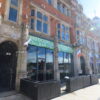Coronavirus News
France: Virus cases spike to 4,700 in a day
Publishedduration20 Augustimage copyrightEPAimage captionConfirmed cases in France have been accelerating from about 1,000 a day in mid-AugustFrance has reported a sharp rise in the number of coronavirus cases – 4,771 – up a thousand on Wednesday’s figure.It is the first time more than 4,000 daily cases have been seen since May.Meanwhile Spain, Germany and Italy…

- Published
image copyrightEPA
France has reported a sharp rise in the number of coronavirus cases – 4,771 – up a thousand on Wednesday’s figure.
It is the first time more than 4,000 daily cases have been seen since May.
Meanwhile Spain, Germany and Italy have also recorded their highest numbers of cases since late April or May.
Many of the new Spanish cases are reportedly among the young, while German cases are said to be driven by a lack of social distancing and travellers returning from abroad.
The UK – which has Europe’s highest coronavirus death toll – registered a further 1,182 cases on Thursday.
Why are cases rising in France?
The number of confirmed cases has been accelerating since mid-August.
France has increased its testing capacity and carried out 664,000 tests over the past week, the health ministry said, but the rate of positive cases has also been increasing. It stood at 3.3% for the week between 11-17 August, up from 2.1% previously and more than double the 1.5% rate seen at the end of July.
Officials say the virus is now mostly circulating in major cities among the young, who typically do not have serious symptoms, and this is why the number of people being treated in hospital has not changed much.
Nevertheless three more cities – St Etienne, Nice and Toulouse – have made wearing a mask mandatory in their city centres. Mask-wearing is already required in busy areas of the capital Paris.
Education Minister Jean-Michel Blanquer has ruled out any postponement of the new school year, which begins on 1 September, although he conceded there “could be local exceptions”.
Pupils aged 11 and above will be required to wear masks when they are moving around schools in confined spaces and in classrooms when they are face to face and separated by less than a metre (3ft).
What’s the picture in Spain?
Spain reported 3,349 new cases on Thursday, with the health ministry’s emergencies coordinator Fernando Simón saying that no-one in the country should be in any doubt that “things are not going well”.
“Although the epidemic is not out of control at a national level, it is [out of control] in certain concrete ways,” he added, quoted by El País newspaper.
image copyrightReuters
If cases continue to rise there would be “many hospitalisations, many people in intensive care and many deaths”, he said. The country has seen 122 deaths over the past week, more than ten times the level seen a month ago.
The average age of those confirmed to have the virus was now 39 for men and 37 for women – far lower than at the height of the epidemic in the country, when the average age of those infected was over 60.
Mr Simón appealed to social media influencers for help in containing the epidemic, asking them to emphasise to their followers that young people could end up infecting older members of their families.
“I understand that people want to go partying, but there are ways and ways of doing that,” he said. “Those with influence over the population must raise awareness about what needs to be done.”
What about Germany?
The country reported 1,707 new cases, with much of the rise blamed on returning holidaymakers as well as parties and family gatherings.
The Robert-Koch Institute said the highest rates of infection were among those returning from Kosovo, Turkey and Croatia.
In the most populous state of North Rhine-Westphalia, more than a third of returnees who tested positive were coming from Kosovo and nearly 20% were coming from Turkey. However, those returning from Spain and Greece made up just 2.5% and 0.5% of positive cases in the state.
image copyrightReuters
Germany has now designated two Croatian regions – Sibenik-Knin and Split-Dalmatia – as virus risk regions and warned against travel there. Arrivals in Germany from those areas will face mandatory tests for coronavirus.
Tourist Cheyenne Maschkewitz in Split told Reuters she had seen less social distancing than at home.
“We arrived here 10 days ago, it’s quite different here than in Germany, like the masks – when you go to shopping they don’t take it seriously, I think,” she said.
The UK and neighbouring Slovenia have also added Croatia – which recorded 255 new infections on Thursday – to their quarantine lists. Slovenia says it has recorded dozens of cases among people returning from Croatian party destinations.
However Croatia’s Interior Minister Davor Bozinovic insisted that “less than 1% of tourists got infected in Croatia” and said a ban on nightclubs opening beyond midnight would probably be extended
And in Italy?
Italy has also reported a sharp rise in infections, with 845 new cases in its latest daily count. The number is not as high as some other European countries but it is a rate of infection that has not been seen there since late May.
“We are not in as bad a position as France and Spain, but the current situation is not satisfactory,” said Professor Massimo Galli, head of infectious diseases at Milan’s Sacco hospital.
image copyrightReuters
The highest number of cases were reported in Veneto with 159 cases and Lombardy with 154 in Italy’s north, and in Rome’s Lazio region with 115.
“The end of confinement has resulted in an excessive feeling of false security,” Prof Galli added, quoted by La Repubblica newspaper.
He also pointed to young people returning from summer holidays, citing the example of nine people with the virus coming back from Croatia.
“I don’t want to look like the one blaming young people,” Prof Galli said, but “every day we receive reports of this type”.

Subscribe to the newsletter news
We hate SPAM and promise to keep your email address safe



















